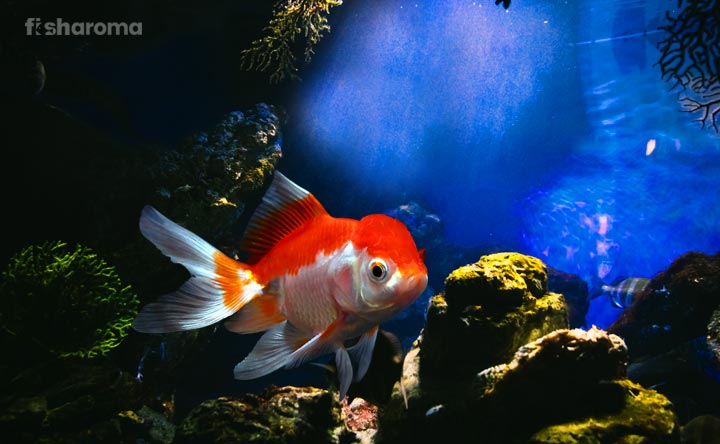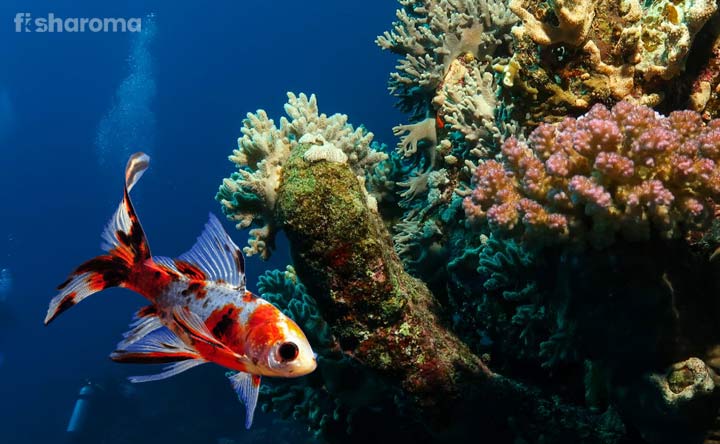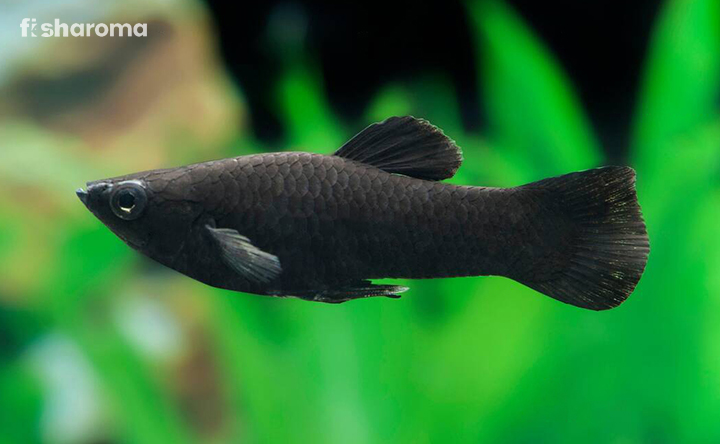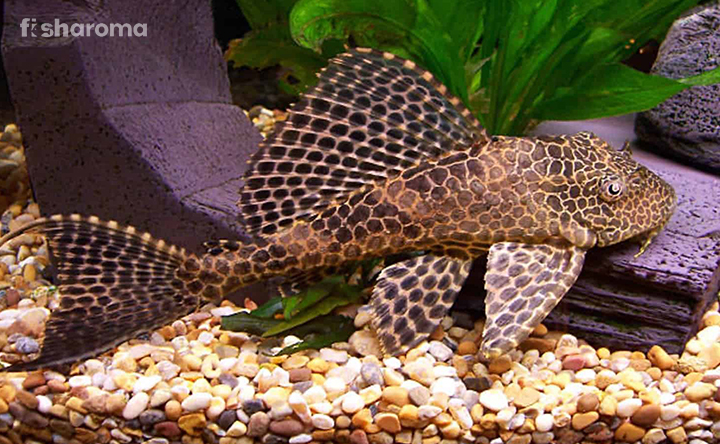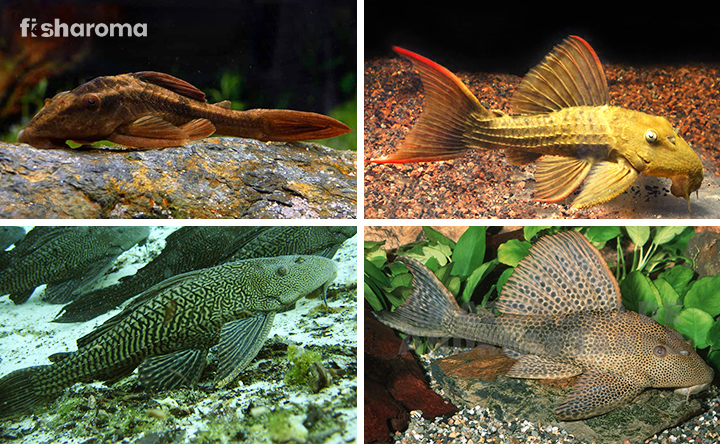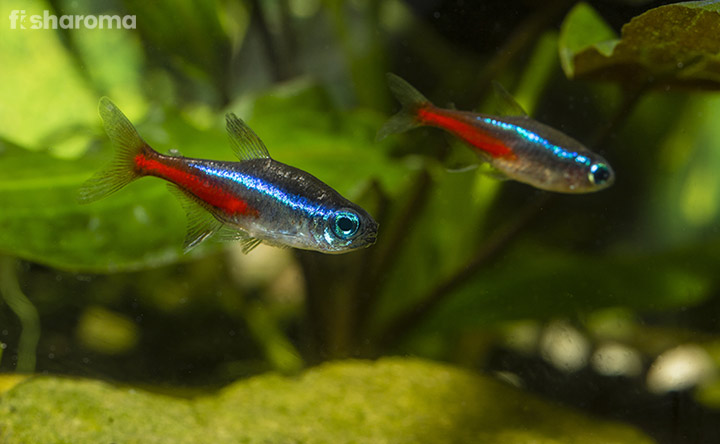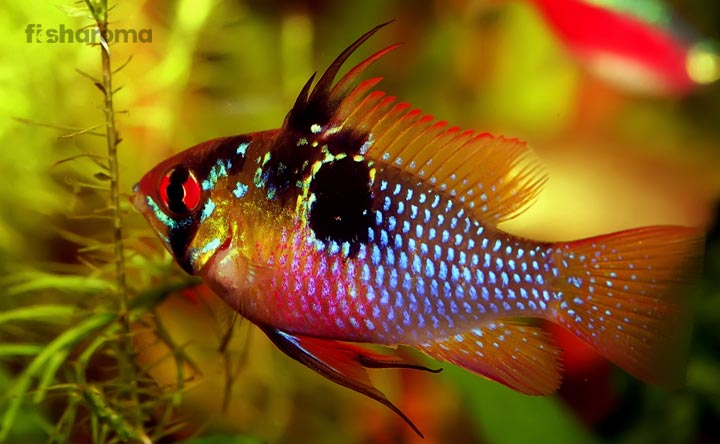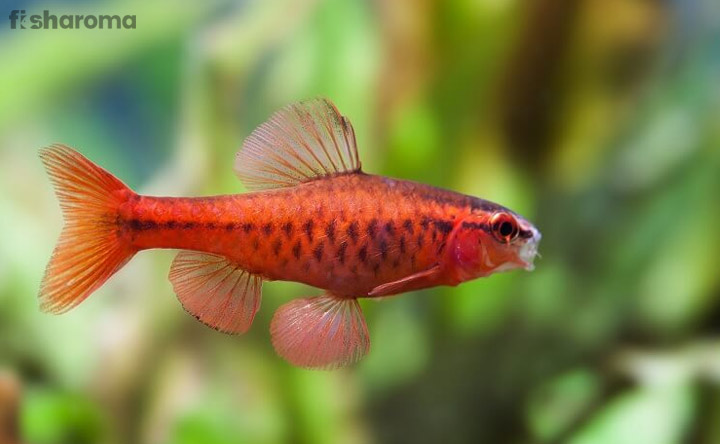The Ultimate Care Guide to Hatchetfish
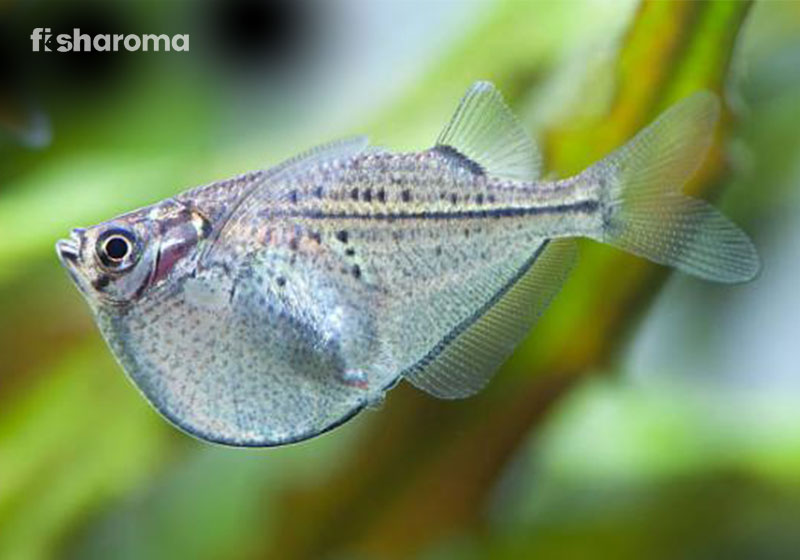
One of the most unique looking freshwater fish out there, Hatchetfish have been adored by fishkeepers around the globe. Watching these little predators roam around your aquarium is truly a delightful experience. But, with good, comes the hard work. They are also counted among the difficult to rear species because of much effort goes on to rearing them. But, we are here to help you out into figuring how to grow them healthily. So, without any further ado, let us dig deep into their comprehensive care guide.
Key Specifications of Hatchetfish
Before we find out about their care guide in detail, let us help you out with a key specification table of their own.
| Scientific Name | Gasteropelecus levis |
| Origin | Central and South America |
| Lifespan | 2-5 years |
| Colours | Varied |
| Temperament | Peaceful |
| Size | 1.25” (3.2 cm) – 2.5” (6.5 cm) |
| Diet | Carnivore |
| Family | Gasteropelecidae |
| Compatibility | Moderate |
| Tank Size | 15-20 gallons |
| Care Level | Difficult |
Overview
Hatchetfish are ferocious beasts and are brilliant swimmers who are known to hunt down their preys swiftly. Their hunting style is even compared to ninja-like warriors. They belong to the Gasteropelecidae family and there are various variants of them under their family umbrella. To be specific, there are nine separate species of Hatchetfish that exist across three genera.
The most common types of Hatchetfish are as follows:
- Silver Hatchetfish, scientifically known as Gasteropelecus levis
- Common Hatchetfish, scientifically known as Gasteropelecus sternicla
- Marbled Hatchetfish, scientifically known as (Carnegiella strigata)
- Blackwing Hatchetfish, scientifically known as (Carnegiella marthae).
Origin & Habitat of Hatchetfish
Native to Central and South America, Hatchetfish mostly thrive in the Amazonian River basin. You can find them in various water bodies such as streams, rivers, swamps, tributaries, pools and canals. Sometimes, during the rainy season, they even pop in floodplain lakes.
They usually roam near the water surface throughout the day. One of the most remarkable features of Hatchetfish is that they can jump to amazing distance. Believe it or not, they can take a leap of up to four feet.
Appearance of Hatchetfish
Hatchetfish derive their name from the fact that they look like a hatchet which gives them a triangular profile, which is why viewing them is such a pleasurable experience. Prominent among their feature are their wing-like fins which makes the excellent swimmers. Their fins are extremely sturdy and stiff and are probably the strongest part of their body.
These fins also help them in taking those gigantic leaps. Speaking of leaps, their pectoral fins which are primarily responsible for giving them the flight, are located higher up their body. Their compressed body sets them apart from most other freshwater pets.
Size of Hatchetfish
Don’t judge the predatory nature of these fish by their tiny stature. Despite being one of the smallest freshwater fish, they are fierce warriors. They grow up to 1.25” (3.2 cm) – 2.5” (6.5 cm).
Colour of Hatchetfish
Although different variants of Hatchetfish come in different colours, the most common variant among them is that of metallic silver. Their bodies are also covered in black and bronze stripes.
Behaviour of Hatchetfish
Hatchetfish are extremely shy by nature, which is why we strongly suggest not to disturb them by knocking on the aquarium walls or flashing lights on them. This would cause a lot of stress to them, thereby deteriorating their health.
For the same reason, they spend a considerable amount of their time hiding. This is true for both the wild and captive counterparts. You will often notice them hiding behind the flourishing roots of the aquatic floating plants that you would host in your freshwater tank. As long as you can replicate the wild in your freshwater tank (to whatever degree you can), you would be able to keep them calm and composed.
Also, it should be noted that they easily get scared of other fish, especially those who are extremely active by nature. As such, you should make note of all these points when you are thinking of hosting them in your freshwater tank, because they demand a lot of commitment from your end. Hosting them is no mean feat, if we are being completely honest.
In addition, they love taking leaps from the water surface, which demands from you a strong and tight lid for your aquarium. Some people regard this as their flying ability, but technically, they don’t really fly, they just make extremely large leaps of up to four feet.
Lifespan of Hatchetfish
In the wild, Hatchetfish can survive till five years. But, in a captive environment, it has been seen that very few can survive more than two years. However, if you truly put in the effort and provide them with a healthy diet (this doesn’t necessarily mean feed them too much food) and follow this care guide of ours by heart, then you can actually add years to their lifespan.
Don’t throw them or dump them in the nearby pond after hosting them for a while since they may not be able to immediately adjust to the wild environment, causing them to meet their untimely death.
Diet of Hatchetfish
Coming to the dietary requirements of Hatchetfish, they are carnivorous by nature which should come as a surprise owning to their predatory nature.
As such, it should be noted that they need plenty supply of protein. Now, a great thing about their diet is that, you can feed them live as well as frozen food. In fact, they also accept frozen-dried and flake food. Therefore, you have a lot of options to choose from. However, please make sure that you thaw the frozen food before putting them into the tank and you moisten the dried food before putting them in the water so that they don’t choke on it.
In addition, owing to their small size, it is heavily recommended that you cut their food into small pieces. In the wild, they mostly feast on insect. So, feeding them the same would lower their stress and keep them happy.
Here are some ideal food options for your Hatchetfish. But before we mention that, let us tell you something important. Keep mixing up the food and make sure there is not a monotonous nature, meaning feed them one food one day, something other the next day. This way, they will stay healthy. Let us now list down for you some of their most preferred food options.
- Bloodworms
- Daphnia
- Tubifex
- Fruit Flies
- Brine Shrimp
- Mosquito Larvae
Tank Requirements for Hatchetfish
Since they are extremely difficult to care for, providing them with an environment that reflects their natural habitat is extremely important. For this purpose, we suggest you to maintain the following tank requirements. Please be extremely specific about these and don’t take anything for granted. After all, you are dealing with their lives here.
Tank Size
Please remember to keep them in batches of at least six since they love to stay in groups. For keeping six of them together, you would need at least a 15 gallon tank. However, if you provide them with a 20 gallon tank, it is even better since it would provide them with more swimming space.
Tank Lid
We can’t stress enough on how important it is to provide them with a strong and tight lid for their freshwater tank. This is because they are known to jump off the water surface. And you don’t want to deal with a situation where they leap out of the water body to their untimely death, right? So, please by a firm and sturdy lid to their tank.
Also, make sure that there is at least 4” (10 cm) gap between the tank lid and the water surface since you also want to avoid a situation where they would hit the tank lid and injure themselves. Allow them to freely leap out of the water since this makes them happy but maintain safety procedures.
Substrate
You can use a dark-coloured substrate for them. This would help in highlighting their colours. As for the material, you can pick anything from sand or gravel or even clay. Make sure there is no artificial colouring to the substrate and there are no sharp objects in it.
Filter
You would have to invest in a strong filter for the freshwater tank where you keep your Hatchetfish because they need a continuous supply of clean water. Else, they will develop sickness and perish away sooner than expected. So, purchase a decent filter for their tank.
Ornaments
As we have stated earlier in the article, Hatchetfish are shy in nature and spend a considerable amount of time hiding and lurking in the shadows. As such, you should provide them with plenty hiding spots. You can choose artificial caves, castles, rocks, and pebbles, among others.
As we have said about the substrate, we are going to say the same thing here again that you need to ensure that there is no artificial colouring to the substrate and there are no sharp objects in it. Also, don’t overpopulate their tank with ornaments. In other words, too much of anything could be bad.
Lighting
These fish don’t have any extraordinary requirements when it comes to their lighting preferences. Just standard aquarium lighting would do the part. All you need to ensure that the lights are switched off for at least ten hours in a day so that they get adequate rest. Do not use too bright or too dull lighting.
Presence of Flora
They prefer thick vegetation in their surroundings since it mimics their natural habitat. Therefore, feel free to add a lot of floating and background plants to the freshwater tank where you host them. However, make sure they have enough space to swim and that those plants don’t bock their swimming areas.
Cleaning Method
Of course, cleaning your freshwater tank regularly is very crucial for their good health. You need to the tank on a monthly basis at least. For the purpose of cleaning, never use any chemical or soap-based products as that would leave harmful residue in the tank. You can take the help of a very soft piece of cloth and then dip it in slightly lukewarm water to clean off the interior glass walls.
You may use a soft brush to clean the ornaments and you can run the substrate under tap water to get rid of any debris.
Water Type for Hatchetfish
Picking the right type of water is crucial for their health. Here are some of the things you need to bear in mind.
Temperature
The temperature of the tank water should be 72°F to 79°F (22.2-26.1°C).
pH Level
The pH level of the tank water must be 6.0-6.8.
Hardness
The carbonate hardness of the tank water that hosts a Hatchetfish should be 2-14 dKH.
Replacement Procedure
Coming to water replacement, you can opt for one of the following options. You may:
- Change 10% of the tank water every seven days, or
- Change 30% of the tank water every 15 days, or
- Change 40% of the tank water every 30 days.
Pick only one of the aforementioned methods. Make sure the fresh portion of water has similar water parameters (temperature, pH level and hardness) as that of the old portion of water. In addition, never change the total water content in a single go.
Compatibility of Hatchetfish
As we stated above, if you want to keep more than one Hatchetfish together, you need to provide them with a lot of space, especially the male ones as they are extremely private.
They live on the top of the water surface. As such, keeping them with fish species that mostly reside in the top and middle portion is not ideal. Don’t keep them with active species. Also, avoid keeping them with fish that stay on top of the water surface that are more aggressive and bigger in size than them. Please remember that they prefer strong currents, something which not a lot of other species that are fine with
Breeding of Hatchetfish
Reproducing Hatchetfish is super easy. In order to encourage breeding, you need to increase the oxygen level in your tank and raise the temperature to around 82°F (27.8°C).
When you notice the spikes protruding from the first ray of their pectoral fins of the males, it is a sign that they are ready to spawn. After this, the male fertilizes the eggs and the female leaves the cave. Usually, the males keep a watch over the eggs until they hatch. When that happens, you can give them crushed food in tiny portion. The eggs break in 5-8 days after being fertilized. Generally, the female Hatchetfish continues to look after the fries. The fries generally have a yellow yolk sac under their bellies that disappears after a few days.
In a span of few month, they look like offspring of their parents.
Summary
Hatchetfish are extremely easy to pet as long as you provide them with a protein-rich diet. They are peaceful by nature but due to their shy nature, they display territorial behaviour.
Therefore, you need to provide them with a large space. They are a rare species and they have a large lifespan. So, if you can’t commit to a long time, then don’t pet them since if you decide to throw them in a nearby water body such as pond or stream after few years, they won’t be able to live.
In addition, provide them with a strong filtration system as it would help in keeping the water filled with oxygen and will create heavy current in the tank water, which they need to live.
Care Guides of Other Similar Pets
If this article has interested you, we would like to believe that you would want to check out some of our other articles as well such as:
- Tiger Barb Care Guide: Despite being one of the most common aquarium pets, a lot is still not known about how to grow them healthily. Learn from our care guide as to how to do so.
- Red Devil Cichlid Care Guide: Bring home this unique fish and add an aesthetic element to your house.
- Silver Arowana Care Guide: One of the most elegant aquarium pets, see how you can grow them at home healthily.

